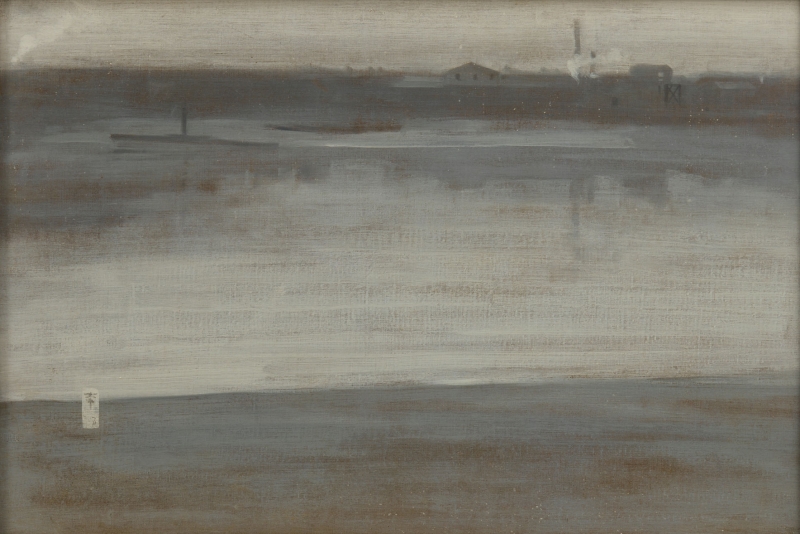Provenance
- By 1904: Mrs Armitage (fl. 1904) ;
- 1904: William Stephen Marchant (1868-1925) , London art dealer;
- 1904: bought by Charles Lang Freer (1856-1919) , Detroit;
- 1919: bequeathed by C. L. Freer to the Freer Gallery of Art.
It was lent by Mrs Armitage to the Fourth Exhibition, International Society of Sculptors, Painters and Gravers, Regent Street, London, 1904 (cat. no. 152a), listed only in the 4th edition of the catalogue. Shortly afterwards 'Symphony in Grey - Early Morning, Thames' was sold by Marchant to C. L. Freer in April 1904, for 1100 guineas, including commission.
Exhibitions
- 1872: Probably Fifth Exhibition of the Society of French Artists [Winter Exhibition], Deschamps Gallery, London, 1872 (cat. no. 122) as 'Harmony in Grey'.
- 1904: Fourth Exhibition, International Society of Sculptors, Painters and Gravers, Regent Street, London, 1904, 4th edition (cat. no. 152a) as 'Symphony in Grey'.
- Comparative exhibition of native and foreign art, Society of Art Collectors, New York, 1904 (cat. no. 179) as 'Symphony in Grey – Early Morning – Thames'.
- 1905: The Inaugural Loan Collection of Paintings, Buffalo Fine Arts Academy, Buffalo, 1905 (cat. no. 166) as 'Symphony in Grey - Early Morning, Thames' (repr.).
According to Whistler's mother, he submitted 'a lovely grey dawn Study of the River', which may have been this picture, to the Royal Academy in 1872, with her own portrait, Arrangement in Grey and Black: Portrait of the Painter's Mother [YMSM 101], but it would seem it was rejected by the Academy. 1
In a review of the Society of French Artists exhibition of 1872, the Athenaeum described Whistler's 'Harmony in Grey' as 'an exquisite picture, remarkable for the unhesitating exaltation of one quality in Art: a study of twilight effect, the subject being the Thames and shore opposite Chelsea', a description that, though vague, fits this painting. 2
John Ruskin (1819-1900) condemned a painting by Whistler in one of his lectures:
'I never saw anything so impudent on the walls of any exhibition, in any country, as last year [1872] in London. It was a daub professing to be a ‘harmony in pink and white’ (or some such nonsense); absolute rubbish, and which had taken about a quarter of an hour to scrawl or daub – it had no pretence to be called painting. The price asked for it was two hundred and fifty guineas.' 3
'Harmony in Grey' was the only painting by Whistler on view in 1872 with the word ‘Harmony’, which had so offended Ruskin, in its exhibition title. 4 However, it was neither pink nor white so Ruskin may have had some other work in his mind: his views, as crudely expressed here, prefigured his libellous attack on Whistler in 1877, which resulted in the Whistler v. Ruskin trial of 1878.
By the terms of C. L. Freer's bequest to the Freer Gallery of Art, the painting cannot be lent to another venue.
Last updated: 31st December 2020 by Margaret





